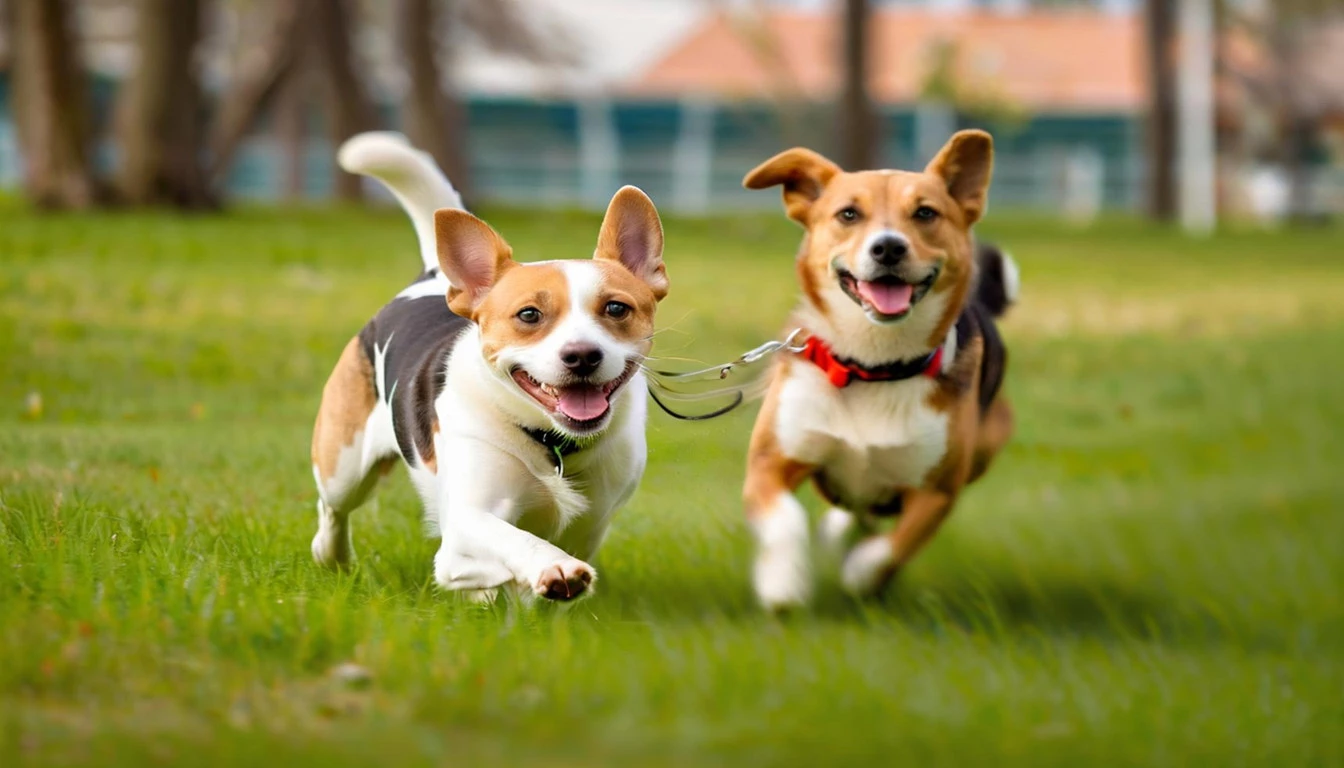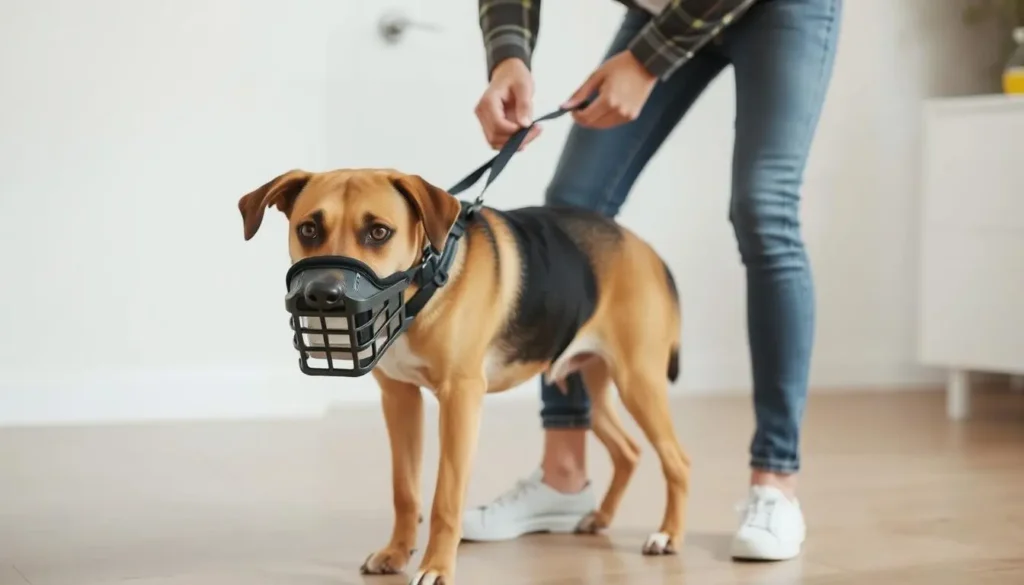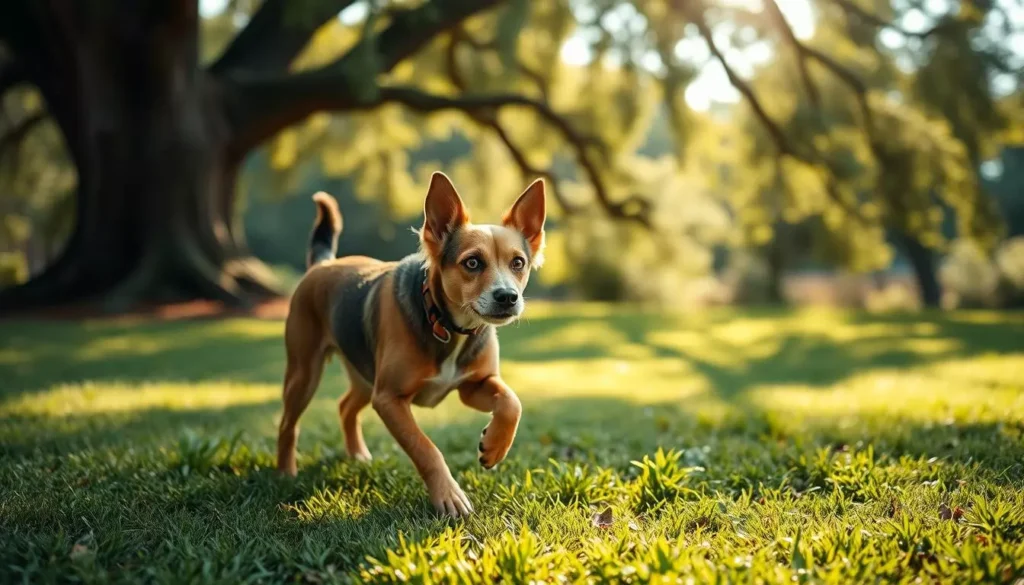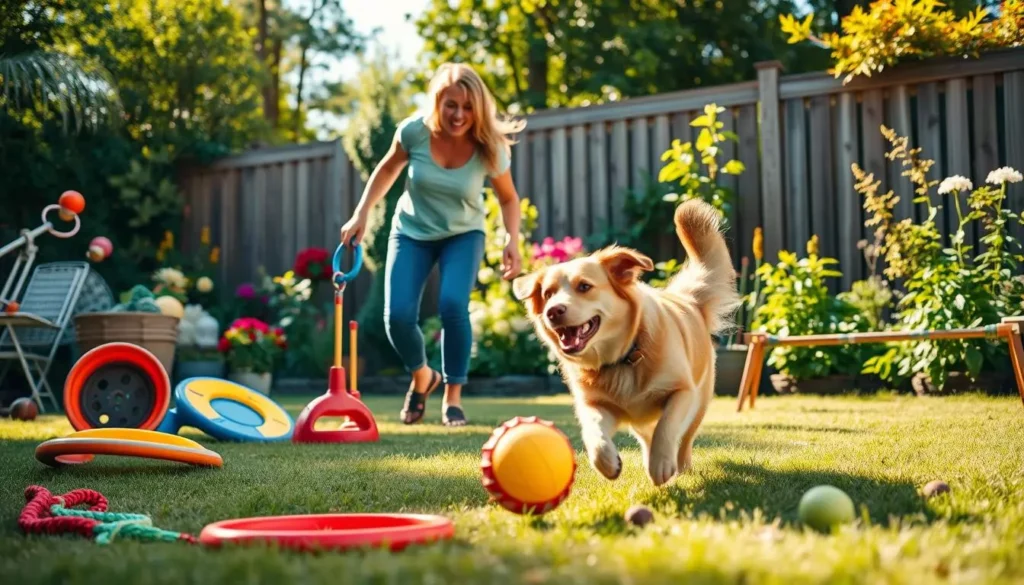As a dog owner, I've faced many challenges, but leash biting tops the list. It's those moments when my dog turns into a playful monster. I wondered how to stop this behavior.
Learning that leash biting is common in dogs helped me relax. It's not just a nuisance; it's a sign of excitement or anxiety. By tackling this issue, we can enjoy our walks more.
With the right strategies, we can make walks peaceful for everyone. It's all about understanding and addressing the reasons behind leash biting.
Key Takeaways
- Leash biting is a common behavior that many dogs display.
- Addressing leash biting behavior can improve walk quality for both owner and dog.
- Understanding the reasons behind leash biting is essential for effective training.
- Implementing positive reinforcement strategies can help prevent leash biting.
- Selecting the right type of leash can minimize biting incidents.
Understanding Leash Biting Behavior
Leash biting shows a dog's feelings, like frustration or excitement. When my dog pulls or bites the leash, it's often because they don't get it. They might feel too excited or confused while walking.
Things like boredom and not enough mental fun play a big role. If my dog's world is dull, they get restless. Knowing this helps me figure out why they bite the leash. Giving them fun activities helps them channel their energy and curiosity in better ways.
Spotting the reasons behind leash biting helps me find better ways to deal with it. When my dog reacts to the leash, I think about their environment, breed, and personality. This helps us have better walks together.
Why Does My Dog Bite the Leash When Walking?
Figuring out why my dog bites the leash helps me fix the issue. Dogs often do this because they're excited, especially around other animals or lively places. This shows they have lots of energy or want to play.
Watching my dog during walks helps me spot these moments. It lets me know when they're likely to bite the leash.
Another reason is anxiety. Some dogs get overwhelmed in crowded or new places. They might bite or tug the leash to deal with their feelings. Knowing this helps me train them better, teaching them to handle different situations.
Seeing leash biting as a sign of deeper feelings, like anxiety or frustration, changes how I view it. It makes our walks better for both of us.
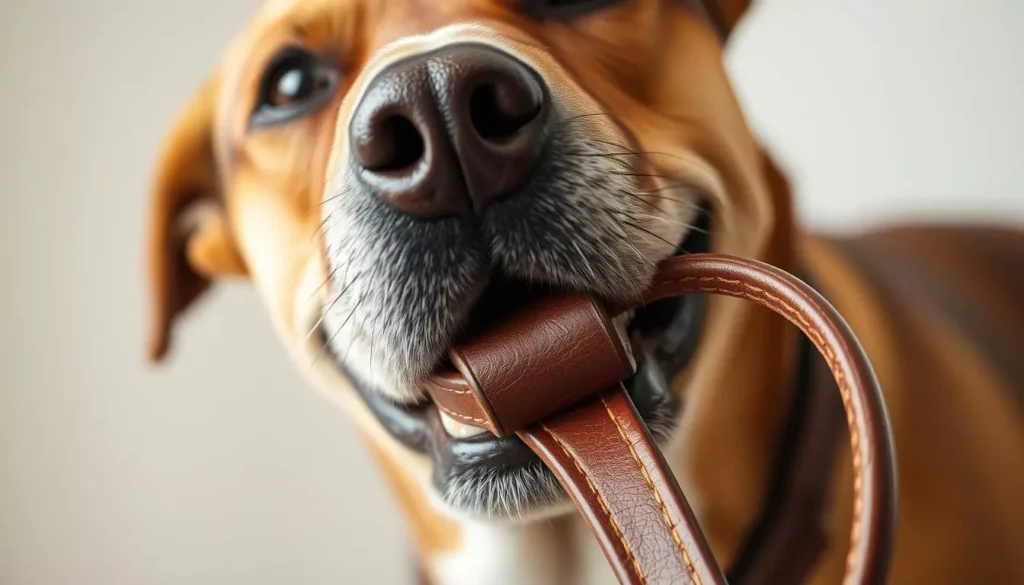
The Frustration and Excitement Behind Leash Biting
Many pet owners feel a mix of frustration in dogs and joy when walking their pets. Leash biting often comes from this mix. Dogs might get overwhelmed and bite the leash in exciting places.
They get excited by new sights, sounds, or smells. This excitement can lead to them biting the leash. It's important to understand these feelings to help them.
By recognizing these emotions, I can make walks better for both of us. I can teach them to handle excitement and frustration better. This makes our walks more fun and positive.
How to Stop Dog from Biting Leash
To stop my dog from biting the leash, I need to understand what makes them do it. Knowing what triggers this behavior helps me find the right ways to prevent it.
Identifying Triggers for Leash Biting
Every dog reacts differently to things around them. I watch my dog closely to see what makes them bite the leash. I look for:
- Things that distract them, like other dogs or people.
- Changes in their body language, like a wagging tail or stiff posture.
- Specific situations that make them bark or lunge.
Knowing what triggers leash biting helps me figure out how to stop it. This way, I can act fast when they start biting.
Recognizing Signs of Excitement or Anxiety
It's important to know when my dog is excited or anxious. This helps prevent leash biting. Signs include:
- Too much barking or whining.
- Pawing at the ground or jumping up.
- Running faster or pulling hard on the leash.
By paying attention to these signs, I can get ready for when they might bite the leash. This makes it easier to stop them from doing it.
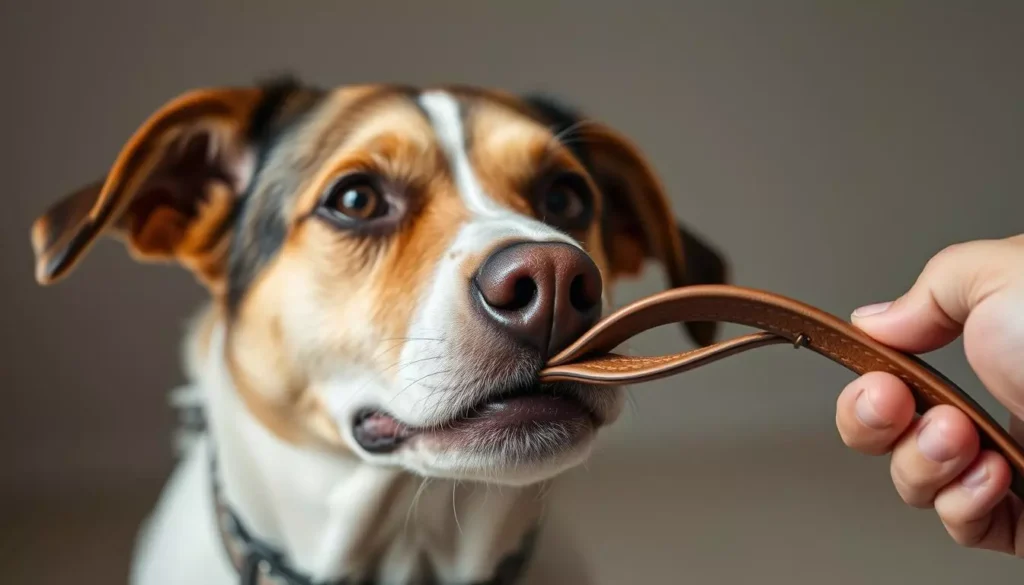
Effective Dog Training for Leash Biting
Teaching your dog not to bite the leash is all about positive reinforcement. Rewarding your dog for calm walking on the leash is key. High-value treats or praise help your dog learn what's expected.
Positive Reinforcement Techniques
Positive reinforcement is key in teaching your dog not to bite the leash. Give treats right away when they walk calmly. This method encourages calm behavior and reinforces it consistently.
Clear communication is vital in this training. Your dog learns to associate calm walking with positive feedback.
Creating a Consistent Training Environment
A consistent training environment is crucial. Everyone in the family should follow the same rules and use the same rewards. This unity helps your dog understand what's right and wrong.
Consistency builds trust and security for your dog. A well-structured environment with positive reinforcement is the best way to stop leash biting.
Choosing the Right Leash for Your Dog
Finding the perfect leash is key for a better walk with my dog. It helps avoid leash biting. I look for leashes that are both durable and functional. A strong leash makes walks more enjoyable by preventing biting.
Sturdy, Chew-Resistant Options
Choosing chew-resistant leashes is crucial to stop my dog from chewing on them. Heavy-duty nylon or reinforced leather are great choices. They last long and keep my dog interested in the walk, cutting down on biting.
Utilizing a Shorter Leash for Better Control
A shorter leash helps me control my dog better. It has two main benefits. First, it keeps my dog's attention off the leash, reducing biting. Second, it brings us closer, improving our communication and response during walks. This teaches my dog that there's no need to bite the leash with better control.
Offering Alternative Behaviors to Your Dog
To teach my dog to not chew leash, I focus on offering alternatives. I carry engaging items like a tug toy or a ball during walks. This method works well for leash biting behavior modification by providing an acceptable outlet for their mouthing instincts.
By engaging my dog with these alternatives, I channel their energy productively. It reinforces that these toys are fun and okay to chew. When my dog starts to bite the leash, I can easily switch their focus by presenting the toy, making the walk enjoyable for both of us. Creating these new habits takes time, but observing my dog with their new toys becomes increasingly rewarding.
| Alternative Behavior | Description | Benefits |
|---|---|---|
| Tug Toy | A durable toy for pulling and tugging. | Encourages play and strengthens the bond between us. |
| Fetch Ball | A ball for throwing and retrieving. | Redirects focus and stimulates exercise during walks. |
| Chew Bones | Edible or durable bone designed for chewing. | Satisfies chewing urges, keeping my dog occupied. |
Engaging Your Dog During Walks
My dog loves to bite the leash because they're bored or have too much energy. To stop this, I keep them engaged during walks. This way, they focus on fun activities instead of the leash.
Incorporating Toys and Treats
Adding treats or toys to our walks really helps. I always carry a few favorites. When they start biting the leash, I give them a treat or play with a toy.
This not only gets their attention but also makes walks more enjoyable. It turns their energy into fun playtime.
Using Sniffing as a Reward
Letting my dog sniff and explore is great for them. It keeps their mind and body active. I let them sniff interesting smells along the way.
This natural behavior helps them use their energy better. It also makes them happier during walks.
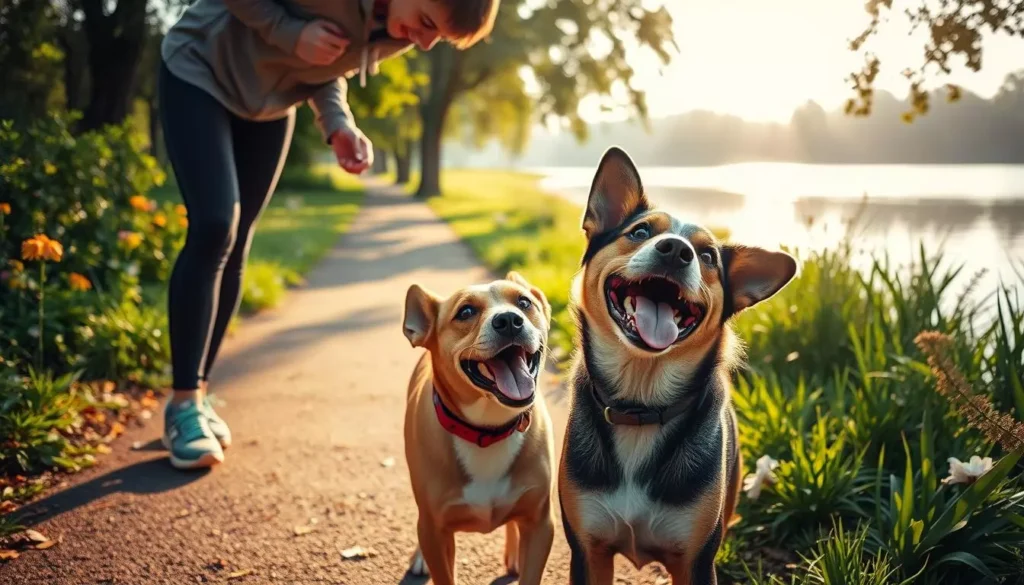
| Activity | Engagement Method | Benefit |
|---|---|---|
| Toy Play | Using toys for dog engagement | Reduces focus on leash biting |
| Sniffing | Encouraging exploration | Mental stimulation |
| Treats | Incorporating treats | Positive reinforcement |
Reducing Frustration with Leash Handling
Effective leash handling is key to a comfortable walk for both me and my dog. It helps keep walks pleasant and stress-free. Keeping the leash loose is crucial. This prevents tension and stops the urge to pull.
It's important not to dangle the leash in front of my dog. This can be seen as a play signal, leading to bad leash behavior. Instead, I use consistent strategies to improve our walks.
Using these leash handling tips helps us bond better. As walks get smoother, my dog is less likely to bite the leash.
| Leash Handling Technique | Benefits | Tips for Implementation |
|---|---|---|
| Keeping the leash loose | Minimizes tension and frustration | Hold the leash firmly but allow for some slack |
| Positioning leash behind the dog | Reduces excitement and provides better control | Keep the leash in a natural position as you walk |
| Avoiding dangling the leash | Prevents misinterpretation as a toy | Try to keep the leash close to my side |
| Establishing consistency | Reinforces positive behavior and reduces confusion | Practice regularly in different environments |
Consistency in Leash Training
To get lasting results in leash training, consistency in leash training is key. When everyone uses the same methods, it clears up confusion for my dog. Using scripts for family helps everyone talk the same language during walks.
Getting everyone to agree on how to communicate makes my dog understand better. This leads to better responses from him.
Scripts for Family Members Walking the Dog
Creating scripts for family makes walks easier. Teaching everyone important phrases and commands keeps things consistent. For example:
- “Let’s go” for starting the walk
- “Heel” for keeping the dog close
- “Stop” for pausing
- “Go sniff” for encouraging exploration
Practicing these scripts with everyone makes walks more fun and less stressful for my dog.
Setting Up a Routine
Having a daily schedule is vital for setting up a routine. Walking at the same times every day helps my dog know what to expect. This makes him feel more secure.
Here are key parts of a good routine:
- Choose consistent walking times each day
- Pair walks with specific commands and scripts
- Include fun elements like toys for engagement
Sticking to a routine helps me reinforce good behaviors. It also makes sure my dog knows what to do during our walks.
Rewarding Desired Behaviors
It's key to reward my dog's good behavior during walks. This makes them feel motivated and happy. Using treats that they love makes training fun for both of us.
Using High-Value Treats Effectively
I always have special treats ready for my dog. These treats are something they really enjoy. When they walk well, I give them a treat right away.
This helps them understand what good behavior gets rewarded. It's a way to teach them what actions are valued.
Praising Calm Behavior During Walks
When my dog is calm, I praise them. Saying "good job" or "well done" makes them feel proud. It also makes them more likely to stay calm.
Positive feedback creates a cycle of good behavior. It makes my dog feel safe and eager to listen. This makes our walks more enjoyable.
Consulting a Professional Dog Trainer
When leash biting is a big problem, consulting a professional often helps a lot. A dog behavior specialist gives me insights into my dog's behavior. They help me see why my dog bites the leash.
They might find out that my dog is anxious or excited. These feelings can make them bite the leash more.
Using dog training services from a certified trainer can improve my training. They create strategies that fit my dog's needs and challenges. This way, we can tackle leash biting more effectively.
Adding professional advice to my dog's training makes a big difference. It helps me use consistent and effective methods. Learning from a specialist can greatly improve my dog's walks.
Common Mistakes to Avoid in Leash Training
Training my dog to stop biting the leash can be tricky. I often make common mistakes that slow us down. It's key to avoid these to improve our training.
One big mistake is using inconsistent commands. This confuses my dog and makes them frustrated. It's important to avoid mixed signals to communicate clearly.
Acknowledging the Impact of Mixed Signals
Mixed signals really slow down training. If I keep changing commands or my voice, my dog gets confused. Being consistent helps them understand what I want.
Using clear and simple signals makes our communication better. This leads to more effective leash training.
Understanding the Importance of Patience
Patience is crucial in dog training. Changing behavior takes time, and every small step is important. Keeping my expectations realistic helps us stay positive.
When I'm calm and patient, my dog learns better. This makes leash training fun for both of us.
Conclusion
Stopping leash biting is key for fun walks with my dog. Using good leash biting solutions makes walks better and strengthens our bond. Positive reinforcement and fun activities help us both enjoy our walks.
Using the tips from this article has changed our walks for the better. Knowing what triggers leash biting and setting routines helps a lot. It makes our walks enjoyable and keeps my dog happy and safe.
With time and effort, our walks can be great again. By sticking to these strategies, I'm making sure my dog loves being outside. No more worries about leash biting ruining our fun.

